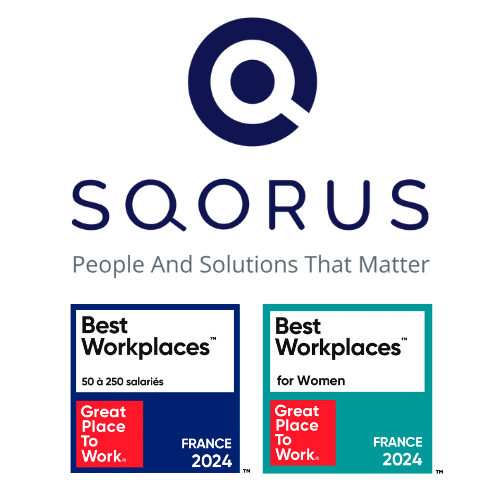The types of professional profiles involved in the management and governance of a Finance IS project, such as an ERP, vary according to the type of sector, the size of the company, the management tools used and the type of project to be implemented. In order to ensure the smooth running of an ERP (Enterprise Resource Planning) project, it is necessary to divide its management into several phases that include various actors. The steering committee is active at all stages of project management. This includes senior management or a delegate, as well as a sponsor who arbitrates the conduct of the project. The IT department also has a role to play in determining the company’s needs in an objective and clear manner
The scope of the Finance IS project
In order to develop strategic projects and to ensure the smooth running of the implementation stages of the Finance IS project or any other project, the various professional bodies that make up the project teams must be competent and active. The scoping phase requires the intervention of senior consultants and experienced project managers, in order to help the client define the real needs of his company.
The project manager, who may be represented by a Chief Financial Officer (CFO) or the Chief Information Officer (CIO ), ensures that the technical aspects are in line with the company’s needs and sufficiently efficient. The scoping phase also includes locating the scope and processes for project management. If the project is carried out in an international company, a tax advisor may be necessary. He will have the role of managing the specificities of his country which vary greatly from one place to another (VAT, administrative taxes, banking processes, customs clearance).
The project must be in line with the means and requirements of the company by taking place in a progressive way, while aiming at a continuous improvement. It is essential to integrate change management methods from the beginning of the project design, in order to offer quality support to users of the new management tools. The latter can sometimes be apprehensive about changes in work habits.
The design, the realization and the recipe
From the design to the acceptance, through the realization of the project, many internal actors can be involved depending on the projects. Some of the most common actors include:
- the General Manager or Chief Financial Officer,
- project managers: AMOA or MOA consultant, management controller or employee with technical expertise,
- consultants who are experts in the solution implemented: functional consultant, technical architect, solution architect,
- a technical consultant in the event of technical problems, as requested by the IT Department,
- an IT manager,
- Professionals from the following sectors: purchasing or sales administration, accounting, marketing, commerce, etc.
A CFO or CIO usually oversees and supervises the entire ERP project. It is his duty to ensure that the project goal is achieved and that the business objectives are operational. The project manager‘s mission includes planning, managing, coordinating and supervising the work, as well as respecting the budget and deadlines set by the general management. As a manager, professional experience allows him/her to be competent in various functional areas. He also ensures tasks such as the planning of professional meetings (content, duration) or the training of teams in the proper use of new ERP software.
The primary role of a consultant is to advise on the implementation of the solution and the prevention of risks associated with the application of the process. The elements on which the consultant is required to interact encompass technical risks, regulations to be complied with, the General Data Protection Regulation(GDPR) and IFRS accounting.
In order to obtain a continuous improvement of the use of the new management tools, it is important to involve the users of the product, by taking into account their apprehensions and their remarks. Finally, the IT manager is actively involved in coordinating the tasks inherent to his or her field. He coordinates the company’s needs with ERP suppliers, supplies resources and assists project teams when necessary.
Finance IS project: deployment and training
In order to ensure the smooth running of the change management process, which begins as soon as the IS project is conceptualized, various aspects must be taken into account. In this perspective, it is necessary to detail the stages of awareness of the project to all employees of the company as well as the terms of the training of the users to the tool. An HR consultant can help with this task.
As for the project manager, who has followed all the stages of the IS project, his mission consists of steering the project, guaranteeing the milestones, managing the budget and ensuring the smooth running of the change management. The project manager can request the assistance of the PMO who is an integral part of the project team. The latter can ensure the coordination of the project phases, the establishment of the task schedule, the implementation of the indicators. The PMO may also be called upon to participate in the animation of steering committees and project committees.
CFO: how should your Finance IS project be governed?
Manage your project effectively and maximize the performance of your Finance IS project team with our guide to the organization, roles and skills to be involved.
Also read in our "project governance" file:
- Project comitology: the governance bodies of an IT project and their roles
- Steering and governance of an HR project: which profiles should be involved?
- Steering and governance of a Finance IS project: which profiles should be involved?
- Steering and governance of an IT project: which profiles should be involved?
- Project governance: what role for the steering committee?
- The actors of a project team: organization, role and skills
- The IS manager at the heart of the development and evolution of systems
- HRIS Manager: what role in the evolution of HR Information Systems?
- IS project manager: what role and responsibility in an IS project?
- Functional consultant: a role close to the business processes
- Technical consultant: a profession at the heart of technological development
- Solution architect: a profession that manages development and deployment
- DevOps Consultant: role, missions and development skills
- Data Protection Officer (DPO): what roles and missions?
- CISO: a key job within the business for system security
- The service delivery manager at the heart of team management
- Scrum master, a key profession for Scrum project management
- Data scientist: a strategic profession at the service of management
- MOA / MOE: how are the roles divided on a project of implementation of an information system?
Contact
A project? A request?A question?
Contact us today and find out how we can work together to make your company’s digital future a reality.













